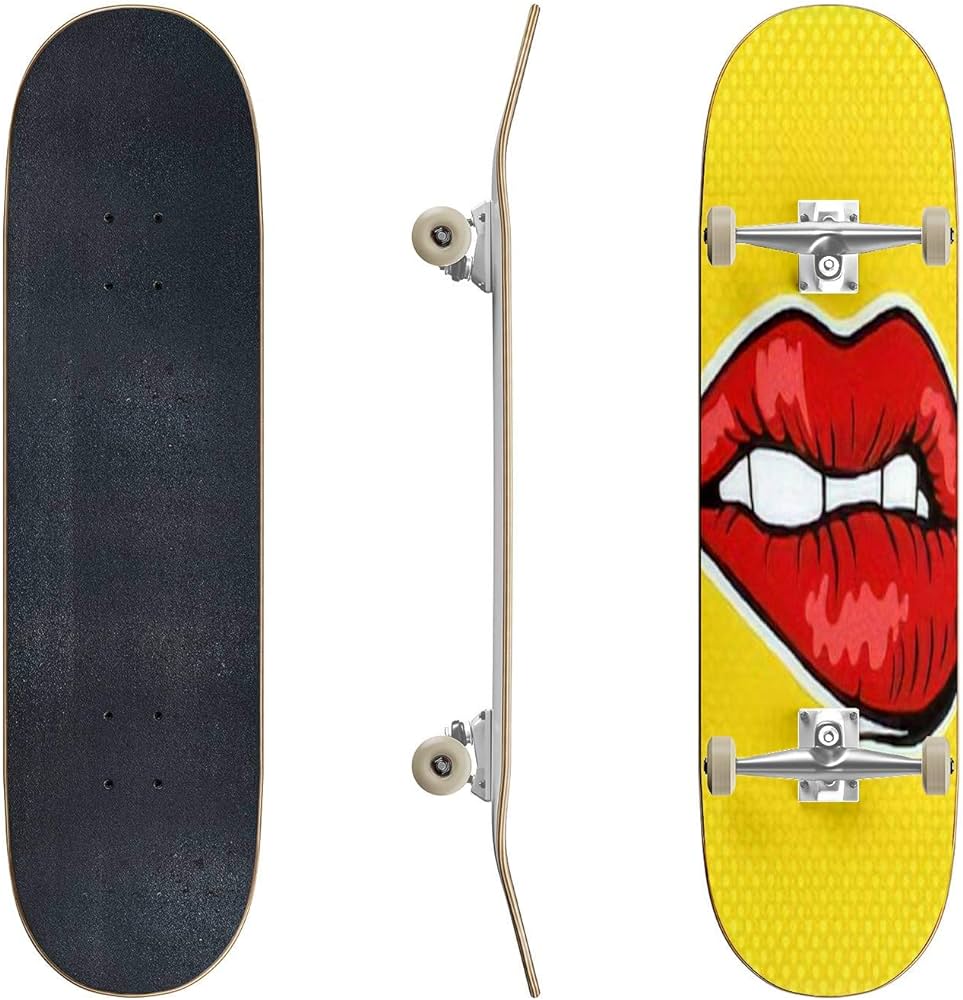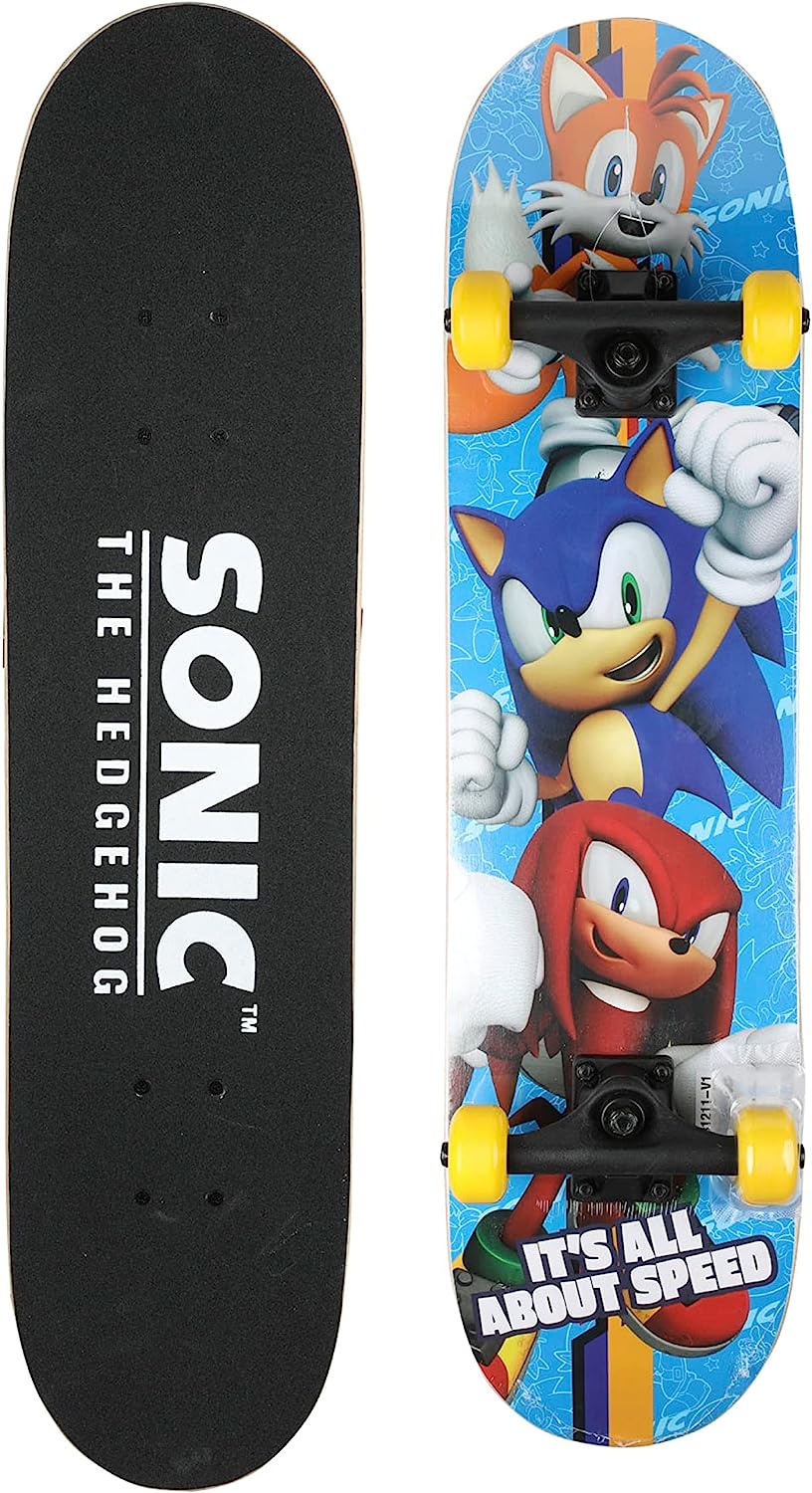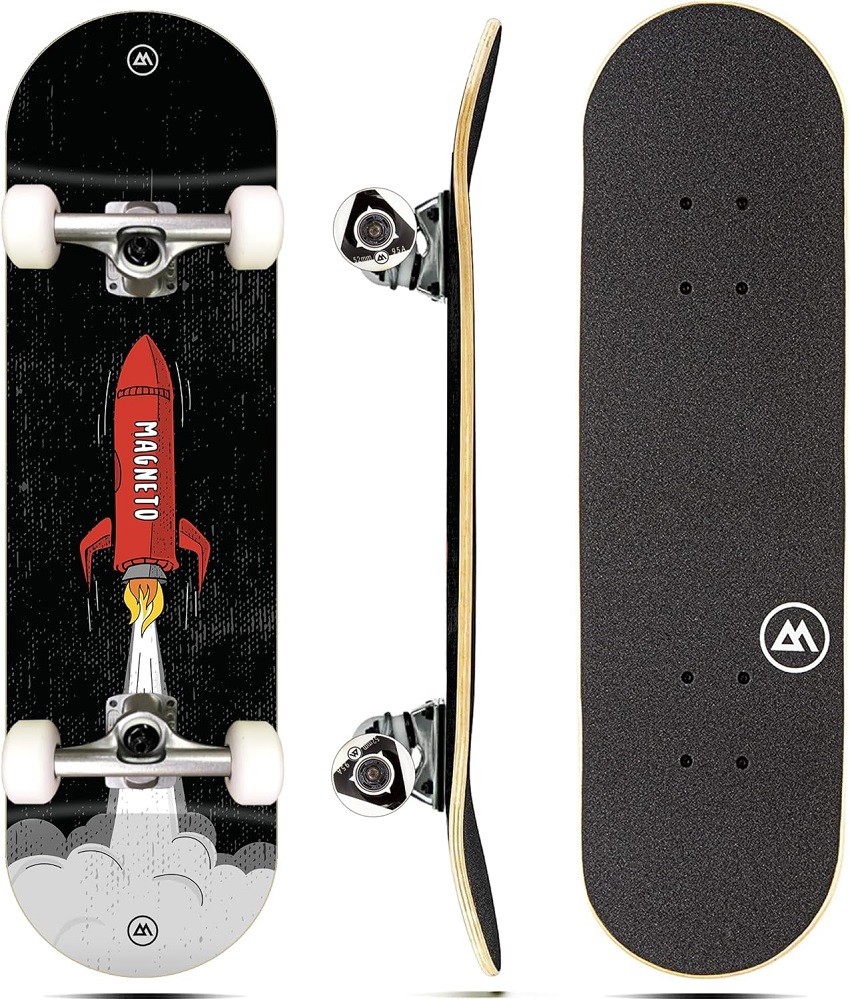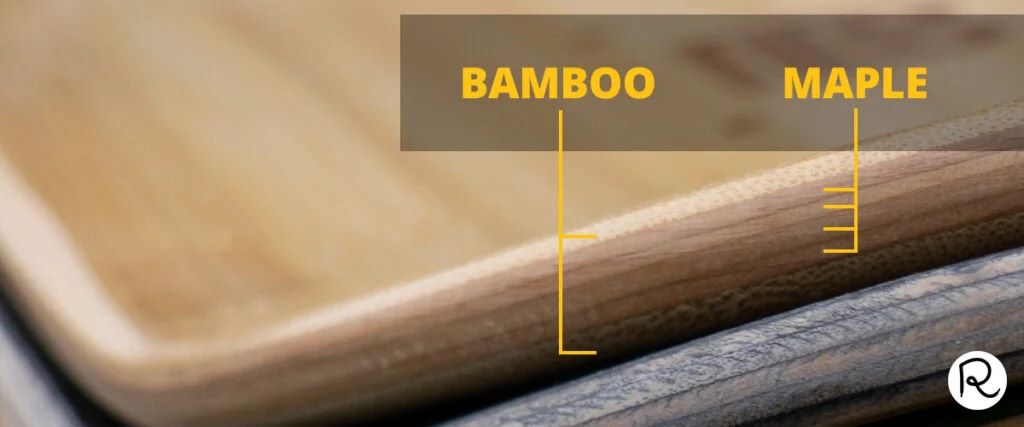Vintage skateboards refer to skateboards from previous eras, often prized for their historical and nostalgic value. Collectors and enthusiasts seek these skateboards for their classic designs and craftsmanship.
Skateboarding culture has a rich history, dating back to the 1950s and 1960s. Vintage skateboards capture the essence of this past era with their unique styles and the stories they carry. These boards, from brands like Powell Peralta, Santa Cruz, and Vision, often feature iconic graphics and are made with materials and techniques that differ from today’s modern boards.
Collecting vintage skateboards has become a passion for many, as they embody the evolution of skateboarding from a casual pastime to a professional sport and influential lifestyle. Enthusiasts often showcase these pieces of history in their homes or use them to hit the streets, bringing a piece of the past into the contemporary skating scene.
Why Vintage Boards Fascinate
Skateboarding culture has ridden the waves of popularity through the decades, evolving with each new generation. Part of this rich tapestry is the allure of vintage skateboards, which have become captivating collectibles and treasured nostalgic items for enthusiasts and casual observers alike. Why Vintage Boards Fascinate is not just a question of their historical significance but also their embodiment of an era, the stories they carry, and the unique charm they hold. Let’s delve into the heart of this fascination.
Emotional Connection To Skate Culture
For many, vintage skateboards are not simply objects; they are time capsules of youth, freedom, and the rebel spirit of the skateboarding community. These boards, often scuffed and scarred, are tokens of a skateboarder’s journey, echoing the thrills and spills of past rides. The emotional bond between a skater and their board is profound as they act as silent witnesses to the trials, triumphs, and evolution of individual skaters and the culture at large.
Aesthetic Appeal Of Retro Designs
Vintage skateboards carry with them an irresistible retro charm. The bold colors, striking patterns, and graphic designs of yesteryear stand out in an era where minimalism often dominates. These designs are more than just eye-catching; they reflect the creative expression and artistic trends of their times, making each board a piece of functional art. Collectors and admirers often display these boards not just for their historical value but also for their beauty, transforming spaces with a splash of vintage style.
Rarity And Value Of Old-school Skateboards
The hunt for vintage skateboards is fueled by the thrill of finding something rare and, potentially, of considerable value. Over time, certain boards have become highly sought-after commodities within the collectible market. Factors such as brand, condition, age, and historical significance all play a role in determining a board’s worth. Some of these skateboards were produced in limited runs, making them rarer and often increasing their monetary value. For collectors, the allure lies in both the cultural value of the find and the potential of a smart investment.
| Brand | Age | Design Elements | Rarity | Estimated Value |
|---|---|---|---|---|
| Vision Gator | 1980s | Bright colors, bold patterns | Rare | High |
| Powell Peralta | 1970s | Iconic graphics, signature models | Common | Medium |
| Alva | 1980s | Edgy designs, street art | Very rare | Very high |
- Skateboards from defunct brands or discontinued designs are particularly prized.
- Signature models associated with legendary skaters can fetch a premium price.
- Boards in pristine condition or still in their original packaging are rare finds in the vintage market.
Collecting Vintage Skateboards
When delving into the niche realm of vintage skateboard collecting, enthusiasts find themselves riding a wave of nostalgia and history. Each board carries with it tales of skate culture’s evolution, groundbreaking designs, and celebrated icons that have rubber-stamped their legacy on the sport. For collectors, it’s not just about acquisition but also a quest to preserve a piece of four-wheeled heritage. Embracing the history that comes with each deck, they preserve a slice of the sport’s soul.
Identifying Valuable Models And Brands
Distinguishing the gems from the generics is key in vintage skateboard collecting. The value hinges on multiple factors: the rarity of the model, brand prestige, associated skateboard legends, and even specific eras or events. Seasoned collectors often seek boards from the golden ages of skateboarding, the 1960s through the 1980s.
- Brands like Powell Peralta, Santa Cruz, and Vision Street Wear have boards that command attention and high prices.
- Editions featuring artwork by renowned artists such as Jim Phillips or Vernon Courtlandt Johnson add to a skateboard’s allure.
- Signed decks, limited editions, and boards associated with skate legends like Tony Hawk or Rodney Mullen are also highly prized.
Authenticating the originality and condition is essential; expert communities and online forums can offer insight and verification to aid in identification.
Where To Find And Purchase Collectibles
Tracking down vintage skateboards is an adventure in itself, with treasure troves hidden in various corners of the market. Collectors often scour through sources such as:
- Online marketplaces like eBay, where filters and search terms help zone in on specific models.
- Skate shops, especially those specializing in vintage goods, may have rare finds or can connect collectors to a network.
- Swap meets and garage sales can unearth unexpected relics from past skate eras.
- Auctions, both online and in-person, often boast a curated selection, but with higher competition.
- Social media groups dedicated to skateboarding history can be goldmines for leads on sales.
Connections and community play a huge role, with many transactions happening through word-of-mouth and within tight-knit circles.
Preserving The Condition Of Classic Skateboards
Maintaining a skateboard’s condition is paramount, as wear and tear can significantly impact its value. Protective measures are essential:
- Avoid exposure to moisture and extreme temperatures, which can warp wood and fade graphics.
- Display skateboards out of direct sunlight to prevent color fading.
- Consider using a glass case for the most prized pieces to shield them from dust and accidental damage.
- Regular dusting and gentle cleaning with appropriate materials keep boards in tip-top shape.
- Documentation of provenance, such as the origin, previous ownership, and any restoration work, complements the board’s physical upkeep.
Whether for passion or investment, appropriate care ensures these vintage pieces continue to tell their stories for generations to come.
Finding The Retro Style In Modern Times
Tapping into the nostalgia of bygone eras, vintage skateboards have begun carving their unique path in modern times. The allure of retro style is not just preserving the past but intertwining it with the contemporary thrill of skateboarding. Enthusiasts now seek ways to blend the old-school cool with the technical advancements of today, resulting in a hybrid skate culture that resonates across generations.
Integrating Vintage Aesthetics With Contemporary Skateboarding
In a world where trends come full circle, the integration of vintage aesthetics with modern skateboarding is a nod to the pioneers while also pushing the boundaries forward. Here’s how enthusiasts are merging the past with the present:
- Design Revival: From the distinct fish-tail decks to classic graphics, current skateboard manufacturers are resurrecting iconic designs, appealing to those who crave a dash of nostalgia in their ride.
- Collaborations: Contemporary brands often team up with vintage skate companies to create limited-edition boards that marry the best of both worlds.
- Skate Tech: Modern hardware and innovative materials are now being paired with retro shapes, giving these throwback boards a performance boost.
Celebrating The History Through Community Events And Meetups
Community events and meetups play a crucial role in keeping the spirit of vintage skateboarding alive. The following are key ways the community comes together:
- Skate Sessions: Regularly organized retro skating sessions allow riders to showcase their vintage boards and styles, creating a living timeline of skateboarding history.
- Exhibitions: From garage setups to museum spaces, exhibitions showcase the evolution of skateboarding, highlighting rare and iconic boards from each era.
- Swap Meets: These gatherings are the perfect spots for collectors to trade and discuss their most prized skate relics, fostering an environment of appreciation and knowledge sharing.
Through these events, the community not only honors the roots of skateboarding but also introduces the charm of the past to newer generations, ensuring the legacy rolls on.
Restoring And Riding Vintage Boards
Embracing the nostalgia of skateboarding, many enthusiasts are turning their attention to vintage skateboards. Not only do these old-school boards offer a glimpse into the past, but they also bring a unique challenge and satisfaction when restored to their former glory. Vintage skateboards, with their distinctive designs and classic constructions, are making a resounding comeback. Whether you’re a seasoned collector or a skateboarding newcomer, restoring and riding these treasures can be both a passionate hobby and a way to connect with skateboarding’s rich history.
Step-by-step Guide On Restoration
The process of bringing a vintage skateboard back to life requires patience, precision, and a love for the craft. Follow these steps to ensure your restoration project is a success:
- Assess the Condition: Carefully examine your skateboard for any damage. Look for signs of wood rot, rust on the metal parts, or cracks.
- Gather the Necessary Tools: You’ll need items such as sandpaper, wood filler, a screwdriver, and possibly some paint or varnish.
- Clean Your Board: Start with a gentle cleaning. Remove dirt and grime without damaging the board’s surfaces and graphics.
- Repair Damage: Fill any cracks with wood filler and sand down rough areas until smooth.
- Replace Parts if Necessary: Sometimes, you may need to replace trucks, wheels, or bearings to ensure your board is safe to ride.
- Apply Finishing Touches: Add a coat of paint or varnish to protect the board and restore its original appearance.
- Final Inspection: Look over your skateboard to ensure all parts are secure and the board is ready for use.
Tips For Safely Riding Aged Skateboards
Respect and precaution are key when riding a vintage skateboard. Here’s how to enjoy your classic ride safely:
- Inspect Before Each Use: Check for any loose parts or potential hazards prior to riding.
- Wear Protective Gear: Always use a helmet, elbow pads, knee pads, and wrist guards.
- Start Slow: Familiarize yourself with the feel of the skateboard on a smooth, flat surface before attempting any tricks.
- Avoid Wet Conditions: Water can damage the board and reduce traction, increasing the risk of accidents.
- Replace Worn Components: Keep an eye on the wheels and bearings, replacing them as necessary for a safer ride.
- Understand Your Limits: Vintage boards may not withstand the stresses of modern skateboarding techniques, so ride within your board’s capabilities.
Skateboarding Evolution And Vintage Influence
Skateboarding, an iconic cultural phenomenon, has ridden waves of popularity and innovation since its inception. The vintage influence, with roots stretching back to the 1950s and 60s, has left an indelible mark on the sport and lifestyle. From the materials used to craft boards to the styles and techniques developed by early riders, the history of skateboarding is a tapestry woven with the essence of its earliest days. This deep connection to its past not only survives but thrives, influencing modern skateboarding in numerous ways.
How Vintage Designs Shaped Modern Skateboarding
Vintage skateboard designs have significantly influenced the modern skateboarding landscape. Early boards were simple, with rudimentary shapes and sizes, directly impacting the agility and tricks possible back then. The evolution of board design has seen significant improvements in materials and contours, thereby enhancing performance and expanding the realm of what skaters can achieve.
- Fish shapes and cocktails lend to better aerodynamics and allow for pioneering tricks
- Wider decks and softer wheels contribute to better stability and grip
- Graphics and art that embolden personal expression among skaters
Manufacturers today still produce retro-style models – a nod to their rich history and the timeless aesthetics that continue to resonate with skaters of all ages.
Iconic Skaters And Their Favorite Retro Boards
Iconic skaters throughout history have clung to their favorite boards, many of which boast retro designs. Their choices in gear have shaped trends and inspired countless fans.p
| Skater | Signature Retro Board |
|---|---|
| Tony Alva | The Alva Classic |
| Stacy Peralta | Peralta Warptail |
| Rodney Mullen | Mullen Chess Freestyle Board |
The legacy of these skaters is not only in their innovative techniques and competitive accolades but also in the beloved boards they rode. These vintage skateboards serve as a testament to personal style and the sport’s evolution, proving that the past continues to steer the future.
Frequently Asked Questions Of Vintage Skateboards
What Are Vintage Skateboards Worth?
Vintage skateboards can vary significantly in value. Factors like rarity, condition, brand, and model influence prices. Collectors might pay anywhere from a few hundred to several thousand dollars for particular boards that have historical significance or are in mint condition.
How To Identify Vintage Skateboard Brands?
Look for classic logos, brand tags on the deck, old-school graphics, or distinctive shapes. Researching the era’s popular brands like Powell Peralta, Santa Cruz, or Alva helps. Serial numbers or model names can be clues for identification.
What Era Are Skateboards Considered Vintage?
Vintage skateboards are typically from the 1950s to the early 2000s. Boards from the 60s to 80s, known as the golden era, are especially sought after. Each decade had stylistic and technological advancements that set it apart.
Can You Still Use Vintage Skateboards?
Yes, you can still use vintage skateboards, but be cautious. Old boards may not withstand heavy use. Inspect for structural integrity. For actual skating, newer boards are safer and more efficient, while vintage ones are often kept for collection purposes.
Conclusion
Exploring the realm of vintage skateboards opens a portal to skate culture history. Each skateboard tells a story, from classic designs to iconic brands. Whether you’re a collector or just appreciate the nostalgia, these wheels offer a unique ride down memory lane.
Embrace the retro vibe and keep rolling!





